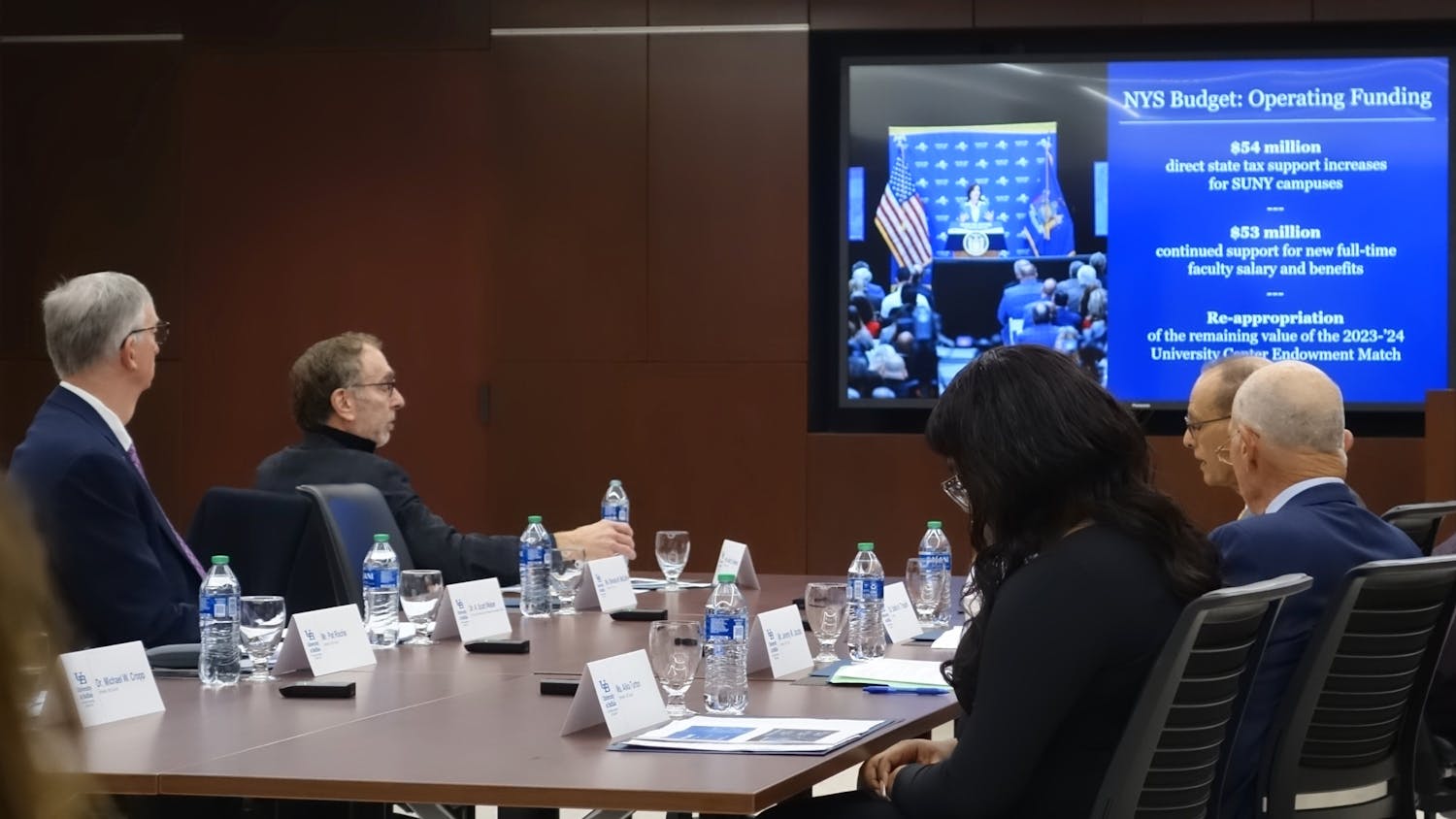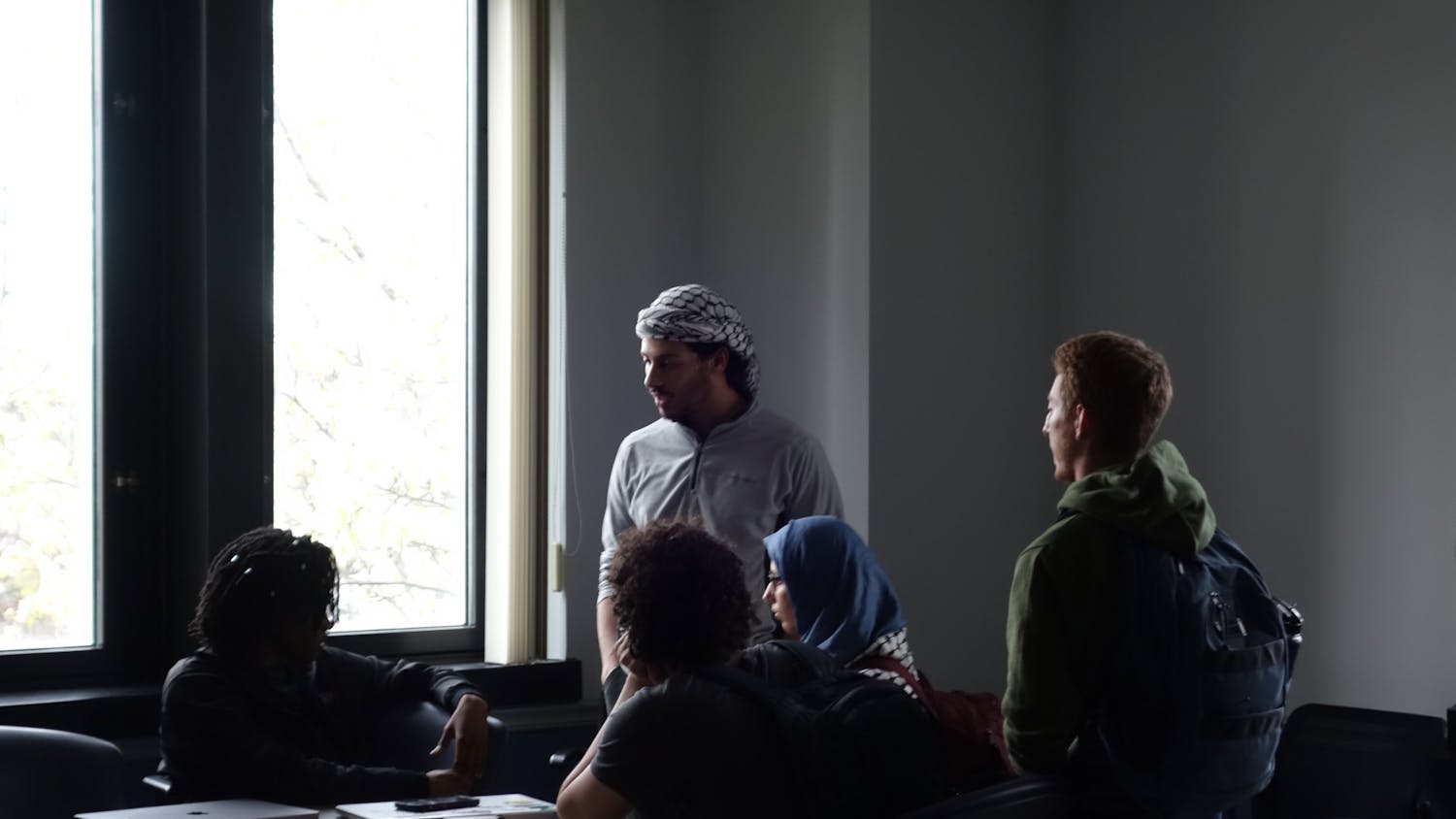Freshmen roommates Neil Campbell, Bennett Sciacca and Tijo Mathew - who were poisoned with carbonmonoxide in their Richmond Quad dorm last week - met with a Student Affairs official on Friday and Monday.
Colleen Connolly, a Student Affairs student support coordinator, had individual meetings with Campbell and Sciacca on Friday and Mathew on Monday. Her goal was to check how they were doing and ask if they needed anything after being hospitalized on Feb. 17.
Campbell, an exercise science major, said Connolly didn't ask him any questions outside of "what happened" the night he was poisoned. He said Connolly asked his roommates if they needed help filling out medical insurance forms to get reimbursed by UB in their individual meetings, but she didn't ask Campbell and he didn't bring it up.
"All she did was ask us what happened," Campbell said about his 20-minute talk with Connolly. "I mean, if [UB] would answer some questions like what actually happened, then I feel like that would be good enough for me."
Campbell, Sciacca and Mathew are currently filling out the forms, which will determine if UB will reimburse them.
Campbell, whose carbon monoxide level reached over 26 times the normal level, said he and his roommates are going to talk to someone at UB this week to ask how exactly Richmond's two carbon monoxide detectors could have gone missing, which caused them to almost die.
He said if he and Mathew hadn't driven themselves to the hospital after feeling light headed, numb and "drunk," they "probably would not have woken up the next morning."
Some victims, including Campbell and Sciacca, were unsatisfied with UB's response to the gas leak. Sciacca said he expected a more personal outreach, like an offer to cover the victims' hospital bill.
"Everything I've read so far has said either the detectors in the room were missing or didn't work," Campbell said. "I'm just wondering why they wouldn't work if carbon monoxide levels were so high. Just that, I guess, is my main question."
UB went "above and beyond the requirements of the code by adding more detectors," Vice President for University Communications Joseph Brennan said. In Richmond, UB replaced the missing plug-in models in the residence rooms on the first floor with wall-mounted battery-operated models. The university also added six detectors in the corridors on the third, fourth and fifth floors.
In addition, there are now more detectors in other residence halls with natural gas-fired boilers, which aren't required by law. Environment, Health and Safety (EH&S) staff are conducting inspections of the detectors that are located in common areas of residence halls to make sure that they are present and working once per week.
UB's next project will be putting hard-wired carbon monoxide detectors in every residence hall.
By New York State law, two carbon monoxide detectors had to be on the ground floor of Richmond Quad, where the boiler that caused the gas leak is located.
On Sunday night, after 10 students became ill and five of them went to the hospital - including Campbell, Sciacca and Mathew - the two plug-in detectors were missing.
However, UB passed the New York State Office of Fire Prevention and Control inspection in October, which means the detectors were present, according to Director of Environment, Health & Safety (EH&S) Joseph Raab.
Campbell said one of his main questions is: "Why did this happen if [UB] passed fire code?"
The fire inspector verbally informed UB there weren't violations in Richmond Quad, and Raab said he will provide The Spectrum with the certificate of compliance for the Fall 2012 NY state fire inspection when he gets it.
Email: news@ubspectrum.com




